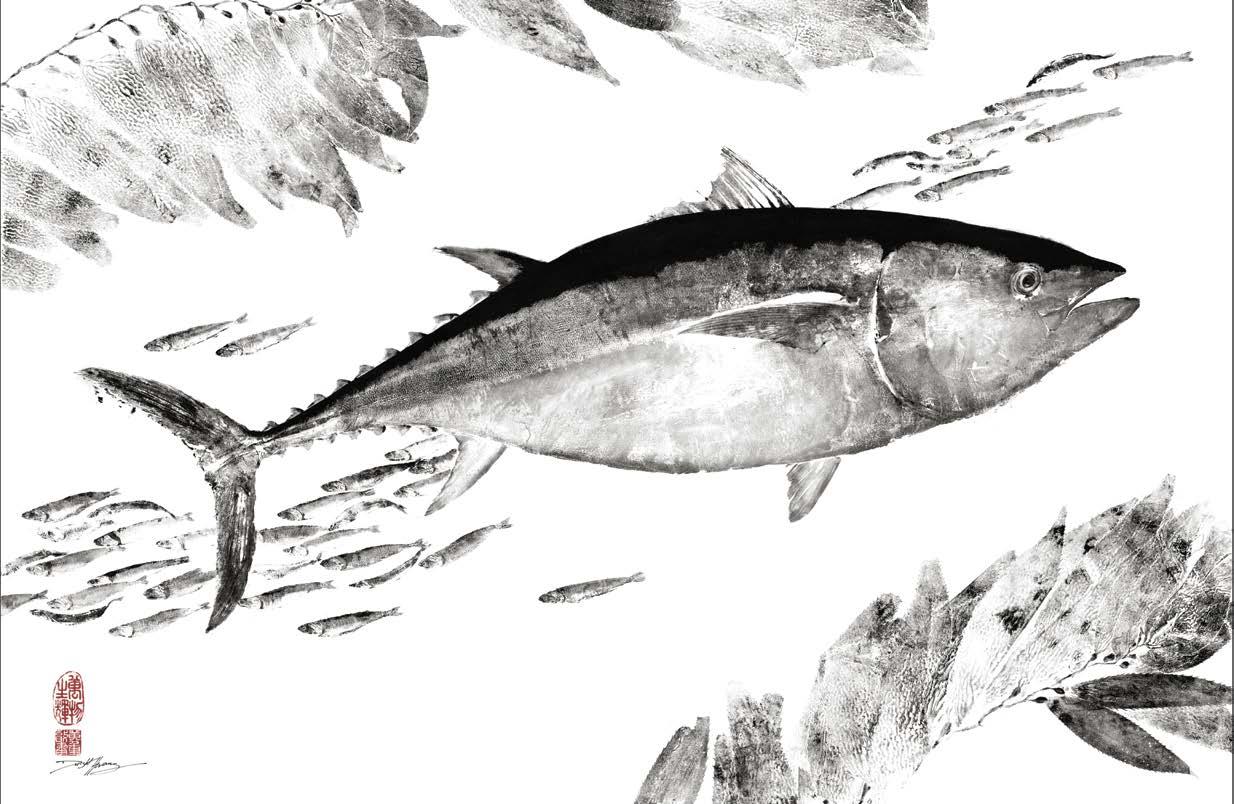




PUBLISHER AND EDITOR IN CHIEF
Katie Stokes
EXECUTIVE EDITOR
Maria Hesse
COPY EDITOR
Dawn Mobley
ADVERTISING
Malinda Romine
Katie Stokes
COVER ART BY DWIGHT HWANG
DESIGN BY MARIA HESSE
ADVERTISING
For information about advertising options, rates, and deadlines please contact katie@ediblesandiego.com.
Edible San Diego magazine is a quarterly publication made available by subscription and free distribution at select locations throughout San Diego County. No part of this publication may be used or reproduced without permission from the publisher. Information in this magazine has been obtained from sources believed to be reliable. The publisher disclaims all liability for any occurrence that may arise as a consequence of the use of information or recipes. Every effort is made to avoid errors, misspellings, and omissions. If an error comes to your attention, please accept our sincere apologies and notify us.
© 2025 All rights reserved.
This magazine is made possible thanks to Edible San Diego advertisers and subscribers. Thank you for supporting San Diego’s local and independently woman-owned food media company.
CONTACT
3451 Via Montebello #192-313 Carlsbad, CA 92009
601-526-1919
info@ediblesandiego.com ediblesandiego.com
Instagram @ediblesdmag
Facebook @ediblesandiego
YouTube @ediblesandiego

Barefoot Books is an award-winning, independent, women-owned and run children’s book publisher based in Concord, MA. Founded by two mothers in England in 1992, they are committed to creating visually captivating books that celebrate global awareness and diversity, spark curiosity, and capture imaginations.
Campestre Mag serves as the guest wine editor in this issue. Founded by Heidi Greenwood, Campestre Mag has become a celebrated voice in the local wine scene, spotlighting the rich and diverse wine cultures of San Diego and Baja California. Since its launch in 2019, Campestre has built a reputation as a biannual indie wine zine that seamlessly weaves together national and global stories of the wine industry and its impact on local communities. Known for its thoughtful collaborations with local writers, businesses, and creatives, the publication reflects a deep commitment to community and sustainability. In this guest editorial role, Campestre brings its deep understanding of the wine industry to Edible San Diego. It offers readers fresh insights into local viticulture and celebrates the people and stories behind the region’s thriving wine culture. This partnership underscores Campestre’s mission to amplify the narratives that make San Diego’s wine industry so dynamic and unique. This special feature promises to be a standout collaboration between two publications championing the best in local food, wine, and community.
Kenise Adams is a freelance writer specializing in raw vegan and living whole foods. Kenise has interviewed California farmers for Edible San Luis Obispo and Edible San Diego and written e-books on juicing, gut cleansing, and raw vegan recipes.
Chloe Caldwell is a travel and lifestyle writer, content creator, and host. Her work is published in Travel + Leisure, LA Times, Business Insider, Uproxx, Thrillist, Brides, and more.
Kenan Chan is a marine ecologist and freelance photographer. His scientific work has taken him around the world, though much of his work has focused on temperate coastal ecosystems like those off the coast of California. As a research diver, Kenan has contributed to long-term monitoring projects assessing the health and status of these important ecosystems. Kenan enjoys combining his scientific work with photography to display the unique ecosystems he and others study.
Beth Demmon is a freelance food + drink writer and certified beer judge who especially enjoys writing about (and drinking) local craft beer. She is the author of The Beer Lovers Guide to Cider: American Ciders for Craft Beer Fans to Explore. Find her at @thedelightedbite on Instagram or her portfolio on Contently.
Lauren di Matteo is a San Diego-based storyteller. Lauren’s creativity captures the beauty of heritage and perseverance, celebrating the inherent dignity of her subjects. She is drawn to stories of craftsmanship, sustainability, and ethical sourcing, and is passionate about bringing those to light. Whether photographing a Michelin-starred chef or farmer in a foreign field, their persistent commitment to craft through hardship inspires her work the most.
Dr. Sabrina A. Falquier, MD, CCMS, DipABLM is a triple-board-certified physician. As CEO of Sensations Salud, she focuses on culinary medicine education and consulting and serves as board chair of Olivewood Gardens. Find her on Intagram @sensationssalud.
Jenn Felmley, known as Chef Jenn, is a highly skilled personal chef. With a love for gourmet cooking, healthy meal prep, and local food, her creations radiate warmth and excitement. Turn your culinary dreams into reality and follow her on Instagram @chefjenncooks.
Leorah Gavidor learned how to write an essay at age seven, and two years after she won her first essay contest. She is a contributor for various San Diego publications, including the Reader, Edible, and San Diego Magazine. Leorah grew up on Long Island (in a town famous for pickles!) and moved to San Diego at 18 where she now lives with her husband.
Elena Gomez is an Emmy-nominated reporter who has spent the majority of her journalism career working in broadcast news in San Diego and Los Angeles, covering everything from wildfires to the Oscars. Gomez’s recent lifestyle pieces have earned her awards with the San Diego Press Club and the Society of Professional Journalists in San Diego. Gomez is the founder of HomeTold with Elena, an award-winning blog focused on hyperlocal stories about North County San Diego.
Heidi Greenwood is the founder of Campestre Mag, a biannual indie zine celebrating the dynamic wine culture of San Diego and Baja California. She is also the visionary behind Esquina Wine Shop and The Puente House, spaces dedicated to fostering community and sustainability through wine.
Dwight Hwang is an award-winning storyteller and nature print artist specializing in gyotaku, a traditional Japanese printmaking technique started in the late samurai era to document nature. Dwight’s work merges the rich history of gyotaku with contemporary design in a style referred to as wa-modan. Each print tells a story through motion and emotion with a deep respect for Japanese ideals, enhancing any space it occupies. Find more of his work at dwighthwang.com.
Emily Laracuente is an illustrator and wine industry community member based in Normal Heights. She can be found sketching at her favorite local coffee shop or pouring wine at your neighborhood wine bar. Find her art on walls, T-shirts, and tote bags in wine bars around town and on Instagram @simpledoodz.
Arianna Litrenta is the founder of Sunflower Creative Co., a content services agency specializing in the food, wine, and travel industry. Established in 2020, Sunflower Creative Co. provides recipe development, food photography, and written content to restaurants, brands, magazines, and cookbooks.
Jen Lo is a San Diego-based editorial and commercial food photographer who is passionate about travel and capturing new perspectives. Jen loves exploring and finding new places to eat with her husband and daughter. Follow her on Instagram @jenlophotography.
Adriana Lucrecia is an editorial and documentary photographer dedicated to telling authentic stories through compelling visuals. With a passion for capturing the essence of people, places, and moments, her work highlights the richness of local culture and community. When not behind the lens, she enjoys exploring new environments with her family in their Volkswagen van, finding inspiration in everyday details, and connecting with creatives who share a love for food, wine, and travel. Follow her work at @__adelgado__/ or www.adrianadelgado.photo.
Julia Martinez is a San Diego-based illustrator with a background in English and media literature from UCLA. Her work blends hand-drawn line art with original text design, appearing in community spaces around the county. A regular contributor to local markets and businesses, she brings a personal, organic touch. She currently works at Fox Point Farms in Encinitas, where her signature style can be seen on their curated menus and seasonal displays.
Julie Pendray has experience working in the natural resources and environmental field as well as moonlighting in the food industry and traveling for stories. She is a certified master composter, an avid gardener, loves to learn about nutrition, and has covered California as a journalist for over four decades.
Ryan Rizzuto is a chef, entrepreneur, and event curator in San Diego. You can taste his work at his own soul food popup, Southside Biscuits. Chef Ryan was nationally recognized as a 2020 Food Hero by Edible Communities and Niman Ranch for his Covid-19-related hunger relief operations at Kitchens for Good. Follow him on Instagram at @chefryanrizzuto and his soul food and public events at @southsidebiscuits.
Luke Schmuecker is a creative director, photographer, and the founder of Farnam West Creative, a brand strategy and creative collective based in San Diego. He has worked on projects for everyone from Food & Wine to the Tennis Channel. In his free time you can find him wandering the aisles of grocery stores, analyzing branding, seeing what’s new, and trying to predict the future.
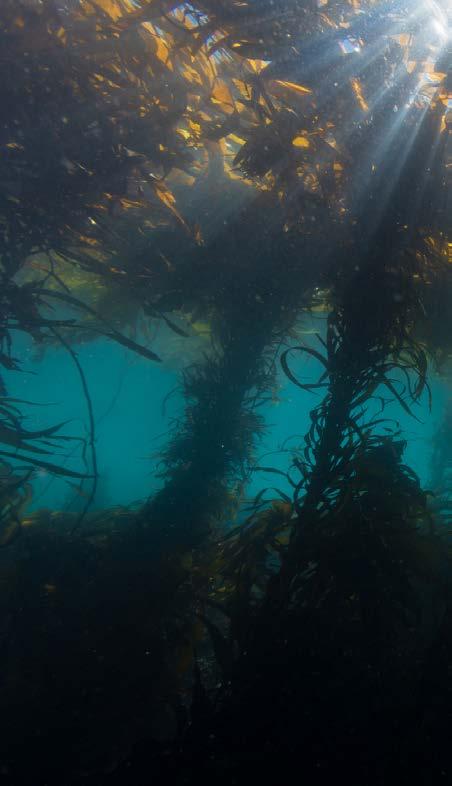
Each Edible San Diego story and recipe you read is the outcome of a collective effort. For months— sometimes years—in the making, we have the privilege of collaborating with talented writers, editors, field experts, chefs, featured guests, photographers, and artists who share in your passionate interests about this region’s vastly dynamic and vital foodscape.
These are our print and digital advertisers. They are pastry chefs, restaurateurs, farmers, viticulturalists, retailers, artisans, and more people who recognize the value in this unique storytelling that you’ve grown to trust and love. They are the reason Edible San Diego can publish and distribute print and digital content for free across San Diego County and on ediblesandiego.com—proudly making our media accessible to all. These businesses recognize the value of green(er) home economics and your best intentions for making the most responsible, informed, and delicious choices.
Furthermore, they believe in the need for an independent media company dedicated to creating connection and enriching our community through good food. We invite you to discover what our advertising partners have to offer. Your patronage of their businesses helps ensure we continue sharing stories and recipes meant to nourish communities.
AMERICAN FARMLAND TRUST
A.R. VALENTIEN
CARLA AND LINDA’S LOCAL FOOD TOURS
CATALINA OFFSHORE PRODUCTS
CHANGING SEAS
CHILDREN’S MUSEUM OF DISCOVERY
CHUPAROSA VINEYARDS
COLETTE’S ON GRAND
CUCINA DI NANA
DA-LE RANCH
DAYBREAK SEAWEED
DOCKSIDE 1953
EDIBLE COMMUNITIES
ESCONDIDO EDUCATION FOUNDATION
FALLBROOK FARMERS’ MARKET
FARMHOUSE 78
FISCHER TOOL AND GARDEN
FRENCHY’S HIDEOUT
GOLDEN DOOR COUNTRY STORE
GOLDEN GINKGO SIGNATURE TRAVEL
GRANGETTO’S FARM & GARDEN
GREEN THUMB NURSERY
THE GRILL AT TORREY PINES
GRILLWORKS
HAPPY HENS
HAWTHORNE COUNTRY STORE
HEAL NONETHELESS
HIND GENTRY FARM
HUNGRY HAWK VINEYARDS & WINERY
JENSEN’S MARKETS
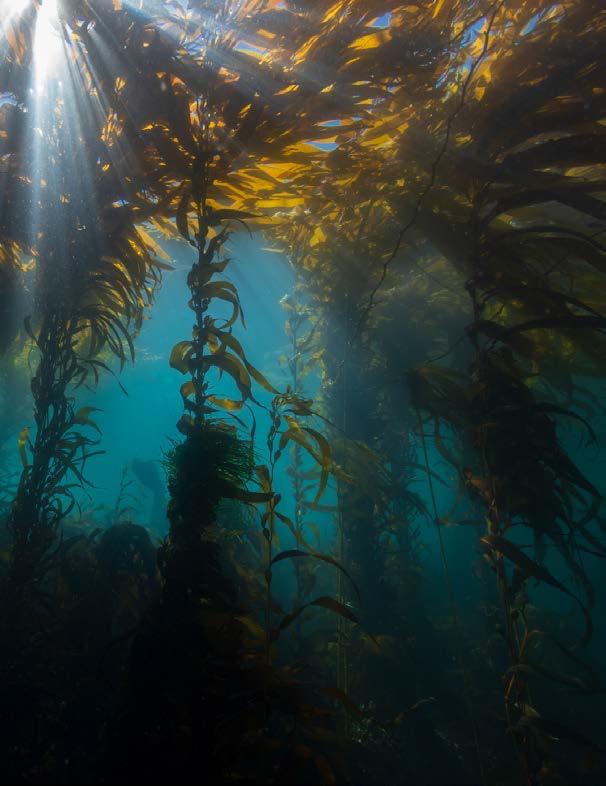
LUCKYBOLT
MAINSTREET OCEANSIDE FARMERS’ MARKET
MIA MARIE VINEYARDS
MITCH’S SEAFOOD
NUTMEG CAFE & BAKERY
OCEANA COASTAL KITCHEN
OCEAN BEACH PEOPLES’ FOOD CO-OP PURE PROJECT
RAMONA FAMILY NATURALS MARKET
RAMONA RANCH WINERY
RAMONA VALLEY VINEYARD ASSOCIATION
RANCHO LA PUERTA
ROSE’S TASTING ROOM
SAFARI COFFEE ROASTERS
SAND N’ STRAW COMMUNITY FARM & FARMSTAND
SOLARE RISTORANTE
SOLAR RAIN WATER
SPECIALTY PRODUCE
STATE STREET FARMERS’ MARKETCARLSBAD
SUGAR KILN
TERRA HOSPITALITY
WHITE ROSE AQUA CREMATION
WOOF’N ROSE WINERY
Join the good food movement here.
Advertise with Edible San Diego

Edible San Diego recognizes the Kumeyaay, Luiseño/Payómkawichum, Cahuilla, and Cupeño/ Kuupangaxwichem people who have lived in relationship with the earth, flora, fauna, waters, and sky for thousands of years as the original stewards of this region. This publication commits to building greater awareness of and appreciation for the traditional ecological knowledge, wisdom, and experiences of San Diego County’s first peoples as an essential part of the health and vitality of our local food system.


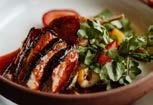


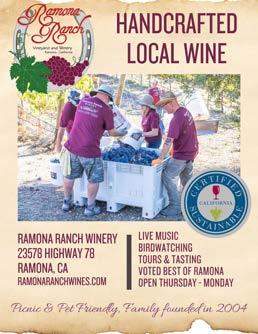


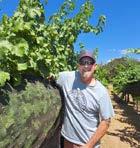


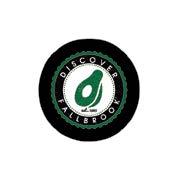



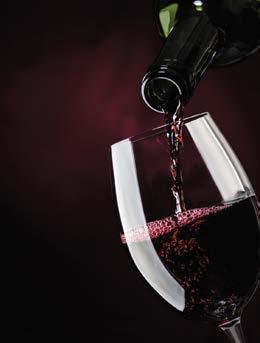


















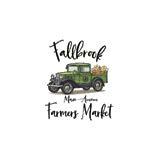





Gyotaku fish print Bluefin Tuna Amongst Kelp & Anchovies by Southern California artist Dwight Hwang. The practice of gyotaku fish printing started in 19th-century Japan to document species and create records of fish captures, later evolving to include other natural flora and fauna. Following the traditional folk art practice, Hwang paints sumi ink onto carefully prepared specimens and prints them on washi paper. THIS
Head to Oceanside Harbor on a Sunday morning and explore the Fishermen’s Market of North County. Story on page
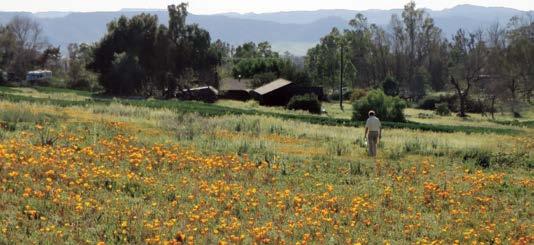

This 1880s homestead lies tucked against the scenic Hogback Hills and borders a conservation gem, the Warm Springs Wildlife Preserve in Murrieta, CA.

Graced with a 1600 sf home built in the 1940s, outbuildings, two private wells, a 4,000 gallon tank, numerous trees and long views, the property provides a serene retreat within minutes of Highway 215. Ten arable acres offer endless possibilities for gardens, orchards, a farm, or destination restaurant.
$995,000
Serious inquiries only please.
No developers or property flippers.
Address: 37100 Los Alamos Road, Murrieta, CA 92563
Owner may be contacted at hsghomestead@proton.me
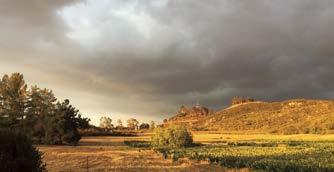
Just 35 minutes to the east of San Diego, the highest quality, award-winning wines are being produced by over 45 boutique wineries, ranging from tiny “labors of love” to larger operations. All of which offer a unique selection of red wines, white wines, and even the occasional sparkling wine.
Warm summer days and star-filled summer nights are the perfect time to sip some of Ramona’s best white and Rosé wines. From crisp and bright Sauvignon Blancs to refreshing and food-friendly Albarinos and Rosés.
In Ramona, white & red wines love our valley. Albarino, Sauvignon Blanc, Viognier, Cabernet Franc, Sangiovese, Tempranillo, Petite Sirah, Rosé and others thrive here.
Wouldn’t today be a good day to come out and taste summer in a glass?

www.rvva.org
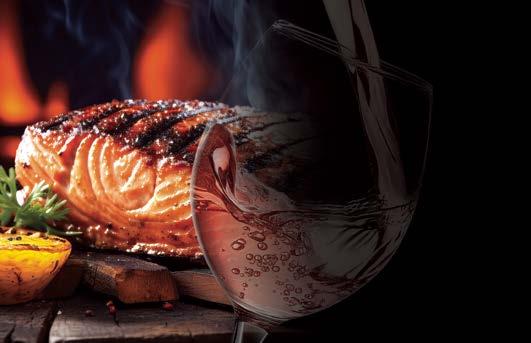




You know that sound of waves breaking and foaming up the beach to your feet? That perception of immensity as you gaze west? Here in San Diego County, this fringe of the world’s largest ocean enamors us with opportunities for dining, play, sport, or contemplation. Meanwhile, on a planetary scale, oceans sequester carbon, emit oxygen, provide sustenance to millions, and embody magnificent and mysterious processes and life that humans are only beginning to understand. We may remember how we are mostly water and need it every day. In turn, waterways around us need our attention and care so that they can do what they do best—cycling water and sustaining life from sky to mountain, creek, estuary, the sea, and back to the sky.
Summertime for Edible San Diego is all about the sea. We pay homage to the glories and challenges of harvesting food from the deep or on land in this summer heat. Look to us to help you fit seasonal and locally minded shopping, cooking, gardening, and dining into your busy days.
Have you visited our website lately? We’re eager to host you there because of all the recipes and articles featuring local food and local food people that we’ve written about for 17 years. Along with our online update, we hope you love the new way we’re presenting our seasonal recipes here in print. And we look forward to seeing you at the Fishermen’s Market of North County on July 20 when we roll up our sleeves to demonstrate one of these recipes, up close and personal.
We’re here to cook together with gratitude each season. We appreciate every reader, advertiser, and subscriber. Wishing you languid moments this summer with the juice of a perfect peach or tomato dribbling down your chin.
Katie Stokes
Publisher and Editor in Chief Edible San Diego
PS—Check out two recent stories that add depth to our conversation about life by the sea.



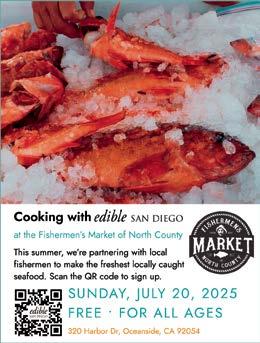

At Jensen’s Foods, we believe that every meal tells a story. That’s why we’re committed to bringing you the finest ingredients from local farms, fisheries, and artisans. From organic heirloom tomatoes to wild-caught salmon, every product on our shelves is carefully selected to meet our high standards of quality and freshness.
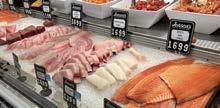
Discover Handpicked Local Goodness & Premium Groceries, All in One Place.
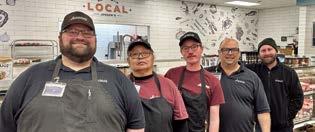
Our fresh meat and seafood departments are second to none, offering a wide variety of premium cuts and sustainably sourced seafood. Whether you’re craving a perfectly marbled ribeye steak, succulent pork chops, or tender, fresh-off-theboat halibut, our knowledgeable butchers and fishmongers are here to guide you to the perfect selection.
Hungry now? Stop by our deli, where you’ll find chefcreated foods that are as delicious as they are convenient. From hearty soups and fresh salads to gourmet sandwiches and entrees, our deli offers a mouthwatering array of ready-to-eat options crafted with the same commitment to quality as everything else we offer.
At Jensen’s, we’re more than just a market—we’re a family. As a family-owned local business, we embrace the values that bring people together: trust, care, and a sense of belonging. Our employees are an extension of our family, and this spirit of togetherness is reflected in everything we do. When you shop with us, you’re part of the Jensen’s family, too. Planning a special dinner? Let our knowledgeable staff help you select the perfect wine to pair with your meal. Looking for something new? Explore our curated selection of international flavors and gourmet treats.

Visit Jensen’s Foods in Point Loma, San Diego, and experience the difference of shopping local. Your table deserves the best—and so do you.
BY RYAN RIZZUTO PHOTOGRAPHY BY ADRIANA LUCRECIA
Ellee Igoe has been a leader and changemaker in San Diego’s food system for over 20 years. She began her career in social and environmental justice, launching a refugee farming project with the International Rescue Committee, and spearheading the start of the City Heights Farmers’ Market. Igoe continues to make her mark by fostering strong and sustainable agricultural communities and expanding food access to San Diego. Learn more about the Foodshed Cooperative and Solidarity Farm by visiting their websites or the Foodshed Food Hub located in City Heights.

Q: How did you get into farming?
There were Somali Bantu folks from Kenya resettling here in San Diego, and they wanted to farm. I was brought in to help them start San Diego’s first urban farm, the New Roots Community Farm, which still operates today. After starting the City Heights Farmers’ Market to provide a viable market for the produce grown at the community farm, the refugee farmers advocated for their ability to farm on open, big tracts of land. That led us to leasing land out in Pauma Valley with an organization called Tierra Miguel.
We started a refugee farming program, and they taught me how to farm. The farming team, who called themselves the Bahati Mamas, mainly lived in City Heights. The drive to Pauma Valley was a bit too far, so many of them ended up folding back into farming at New Roots Community Farm. Myself, my partner Nan, and our two kids stayed on the land and started Solidarity Farm.
Q: From there, how did Foodshed come to be?
In 2019, together with our landlords the Pauma Band of Luiseño Indians, we co-hosted a Carbon Think farming conference with over 150 attendees. The main thing that the group identified was the need for more markets and farmer-led hubs that share resources. In January 2020, we decided to do a pilot project to aggregate food from five farms and distribute it to 60 historically underserved families.
We started March 1, 2020. We stuck our baby toe in and, all of a sudden, the farmers’ markets and restaurants were shuttered, and small farms had nowhere to sell their products. Because of my background working in nonprofits, I knew how to find emergency funds. We received a few grants and started buying as much produce as we could to
send to city centers, to the tribe, and anywhere we knew there was a high need.
That’s how Foodshed got started. When you’re truly seeking input, trying to build things as a community, the best ideas emerge. It’s our responsibility to follow those ideas, and when we do, we end up being at the right place at the right time.
Q: Can you describe what a CSA is?
Absolutely. The really important distinction for a CSA is that it requires shared risk between the farmer and the consumer. The consumer is supposed to invest in the farm by making a financial commitment to buy a share each week or every other week. The farmer’s commitment is to grow the best, most beautiful food they can.
CSA is the most reliable and profitable market channel on a farm: reliable because you know those customers are coming in week after week, and profitable because when you’re curating a box, you end up getting more per item. We all live on planet Earth, and we’re all subject to the same risks. If we want farmers to continually take those risks, to experiment with regenerative practices or climatesmart farming, then we need to be taking that risk together.
Solidarity Farm started its CSA 12 years ago, and we have graduated those customers to Foodshed, but we still have some CSA members who have been supporting us all along. We have 36 farms that we buy from regularly; 10 of those 36 producers are Foodshed Cooperative owners. There’s a pretty powerful sense of support, community, and pride that comes from seeing your customers’ kids grow healthy and strong and knowing that you helped do that together.
Find the full interview on ediblesandiego.com. » foodshedcooperative.com
Greens, tomatoes, melons, and more for summer, made possible by local Community Supported Agriculture
BY JULIE PENDRAY
Escondido
Pickup locations throughout the county.
Leafy greens, cucumbers, green beans, beets, strawberries, summer squash, tomatoes, broccoli, carrots, and more » bewiseranch.com
Foodshed Cooperative
3340 Fairmount Ave., City Heights
Pickup and home delivery. Food from 25 regenerative farmers. Accepts EBT.
» foodshedcooperative.com
Oceanside
Delivery, or pick up at their farmers’ market booths. Updates on Facebook » rodneykawanofarms.org
629 Mar Vista Dr., Vista
Pick up at the farm Wednesdays through Sundays. Onsite farm stand, crafts, events, and animals. Check website for seasonal items. Add-ons include eggs, sourdough bread, honey, and jam » sandnstraw.com
12630 Santa Catalina Rd., Valley Center
Pick up at farm or various San Diego sites.
Monthly updates are available on the website » stehlyfarmsorganics.com
CSA offerings are subject to change. Contact farms directly for more details.
Scan the QR code to find more CSAs on ediblesandiego.com.

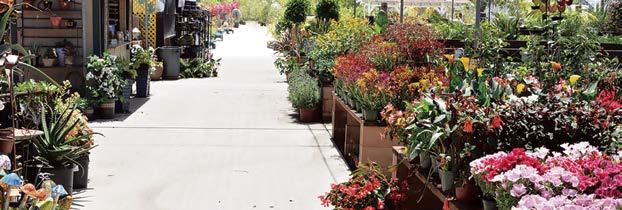



















• 100% natural and organic formula
420 POTTING
• Excellent moisture retention
• 100% natural and organic formula
• 100% natural and organic formula
• 100% natural and organic formula
• Encourages root growth for valuable crops
• Excellent moisture retention
• Excellent moisture retention



• Excellent moisture retention
• Encourages root growth for valuable crops
•
• Encourages root growth for valuable crops
•






• 100% Natural and Organic Soil Conditioner
•
• 100% Natural and Organic Soil Conditioner
• Produces bountiful crops and beautiful blooms
• 100% Natural and Organic Soil Conditioner
• Produces bountiful crops and beautiful blooms

• 100% Natural and Organic Soil Conditioner
• Breaks up hard clay soil
Natural and Organic Soil Conditioner
• Produces bountiful crops and beautiful blooms
• Produces bountiful crops and beautiful blooms
• Breaks up hard clay soil
• Breaks up hard clay soil EARTHWORM CASTINGS
CASTINGS
• 100% Organic Garden Amendment
• Optimal Soil Enricher


• Use to amend native soil
• 100% Organic Garden Amendment

• 100% Organic Garden Amendment
• Optimal Soil Enricher
• Optimal Soil Enricher
• Use to amend native soil
• Use to amend native soil



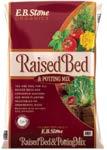



•




•
• Encourages root growth for valuable crops RAISED


•
• 100% Natural and Organic Potting or Planting Mix
• 100% Natural and Organic Potting or Planting Mix
• 100% Natural and Organic Potting or Planting Mix
• Can be used as a soil amendment or ready to use potting soil
• Breaks up hard clay soil











OFF ANY ONE PLANT RECIPE 420 POTTING
• 100% Natural and Organic Potting or Planting Mix
• Can be used as a soil amendment or ready to use potting soil
• Can be used as a soil amendment or ready to use potting soil
• Ready to use right out of the bag for any raised bed
• Ready to use right out of the bag for any raised bed
• Can be used as a soil amendment or ready to use potting soil
• Ready to use right out of the bag for any raised bed SOIL BOOSTER
• Ready to use right












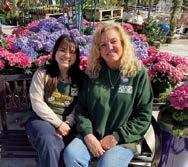





STORY AND PHOTOGRAPHY BY CHLOE CALDWELL
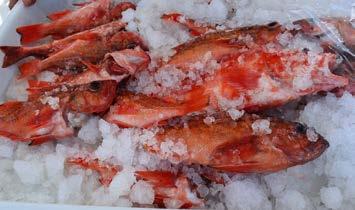

Picture your favorite neighborhood farmers’ market, but instead of fruits and vegetables, every stall displays freshly caught fish on crushed ice. The Fishermen’s Market of North County transforms Oceanside’s coastal nook into a vibrant, open-air seafood haven.
The fishy affair happens every Sunday from 8am to 2pm at the Oceanside Harbor Village—a fitting backdrop of sailboats, seagulls, and kayakers. The open-air market has been operating weekly since its inception in April last year. The team of seafood vendors is made up of Southern California’s dedicated commercial fishermen.
“Commercial fishing is a hard life. It’s more work than people realize,” says Krag Ross, a local fishing veteran of 20 years. “You’ve got to lift those fish and wind them all the way up, but it keeps you strong.”
Ross and the other fishermen typically retrieve their catch on Saturday in preparation for the Sunday market, if not the morning of. Among the usual cod, flounder, tuna, and rockfish are a handful of eccentric sea creatures, such as sea urchins from Treses Seafood, skate from Oceanside Fish Co-Op, and a variety of deep-sea cold-water species.
The stretch of market vendors offer more than seafood. Marketgoers can shop from local brands and discover items like Calacas USA’s handcrafted wooden journals, Plant Life Nursery’s collection of house plants, or premium quality marinades from Sassy Sauces. Patrons can also sip on a smoothie or grab fried fish tacos and light bites while they browse.
The market’s mission is to deliver “quality products, exceptional service, and fun educational experiences for the whole family,” according to the official Fishermen’s Market website. It also offers a more sustainable way to shop, as it reduces transport and promotes small-scale fisheries.
This weekly market also stays true to San Diego’s laid-back beach vibes, bringing the seaside port to life with the salty morning air and the distant clink of sailboat masts.
The market isn’t just about buying seafood, though. It’s about community, sustainability, and celebrating the region’s coastal roots. The Fishermen’s Market of North County is a chance to support local fishermen, shop ultra-fresh seafood straight from the source, and soak up the seaside charm of Oceanside Harbor. It’s a Sunday morning ritual that connects locals and visitors alike to the hardworking hands behind the catch.
Oceanside Harbor Village
320 Harbor Dr., Oceanside
» fishermensmarket.co/market

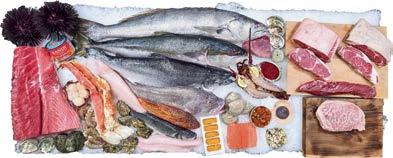



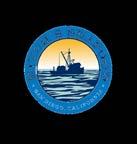
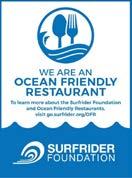

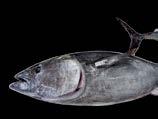

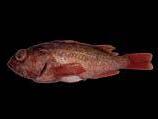









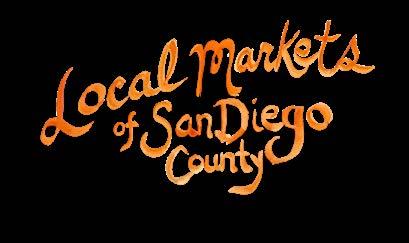


















MONDAY
Escondido—Welk Resort √
8860 Lawrence Welk Dr. 3–7pm
TUESDAY
Coronado √
Near 1st St. & B Ave.
2:30–6pm
Escondido √ * !
Juniper St. btwn Grand Ave. & Valley Pkwy.
2:30–sunset
Mira Mesa √ *
Mira Mesa High School 10510 Reagan Rd.
2:30–7pm
Otay Ranch—Chula Vista √
Otay Ranch Town Center
2015 Birch St. 4–7pm
Pacific Beach Tuesday √ † !
901 Hornblend St.
2–7pm
San Marcos √ †
251 North City Dr. 3–7pm
WEDNESDAY
Carlsbad √ State St. & Carlsbad Village Dr.
2:30–7pm
Little Italy Mercato √ † *
Date St. from Kettner Blvd. to Front St.
9:30am–1:30pm
Ocean Beach √ 4900 block of Newport Ave.
4–8pm
Santee √ † * ! Pathway Center
Carlton Hills Blvd. & Mast Blvd.
3–7pm
THURSDAY
Linda Vista √ *
6939 Linda Vista Rd.
2–7pm
North Park √ † * !
3000 North Park Way at 30th
3–7:30pm

Oceanside Morning √ * !
511 Pier View Way & Hwy. 101 9am–1pm
Ramona Grange Growers
Exchange † NEW Grange Hall 215 7th St. 4–7:30pm
Scripps Ranch √
Newtopia Cyder 10045 Carroll Canyon Rd. 3:30–7:30pm
FRIDAY
La Mesa Village √ * !
La Mesa Blvd. btwn Palm & 4th St. 3–7pm
Rancho Bernardo √ 13330 Paseo del Verano Norte 9am–1pm
SATURDAY
Cardiff √ † * Miracosta College San Elijo Campus 3333 Manchester Ave. 10am–2pm
City Heights - ASCENDKemet Collective Farmers’ Market † 4325 Wightman St. 10am–2pm
Del Mar √
Del Mar Civic Center 1050 Camino Del Mar Noon–4pm
Fallbrook Main Avenue √ * ! Main Ave. btwn Hawthorne & Fig 9am–1:30pm
Imperial Beach † * SunCoast Market Veterans’ Park 1075 8th St.
Third Saturday, 8am–2pm Jamul 14019 Campo Rd. 3–8pm
Little Italy Mercato √ † * !
Date Street from Kettner Blvd. to Front St. 8am–2pm
Mission Valley √ Civita Park 7960 Civita Blvd. 9am–1pm
Point Loma √ NEW location 2740 Chauncy Rd. 9am–1pm
Poway √ *
Old Poway Park 14134 Midland Rd. at Temple 8am–1pm
Ramona √ 424 Letton St. 7am–1pm
Santa Ysabel √ 21887 Washington St. Hwy. 78 & Hwy. 79 Saturday & Sunday 11am–4pm
Tuna Harbor Dockside Market 598 Harbor Ln. 8am–2pm Vista √ † * !
325 S. Melrose Dr. 8am–noon
Chula Vista √
300 Park Way & Third Ave. 10am–2pm
Fishermen’s Market of North County
320 Harbor Dr. 8am–2pm
Hidden Escondido √ † By Grape Day Park and James Stone Pool 123 Woodward Ave. 9am–1pm
Hillcrest √ * NEW location 4002 Normal St.
Rancho Santa Fe √ Del Rayo Village 16079 San Dieguito Rd. 9:30am–2pm
Santa Ysabel √ 21887 Washington St. Hwy. 78 & Hwy. 79 Saturday & Sunday 11am–4pm
Solana Beach √ 444 So. Cedros Ave. Noon–4pm
People’s Produce Mobile Farmers’ Market † Visit projectnewvillage.org for days and locations.
√ Markets certified by the San Diego County Agricultural Commissioner, ensuring that the produce is grown by the seller or another certified farmer in California, and meets all state quality standards.
† Market vendors accept EBT (Electronic Benefit Transfer).
* Market vendors accept WIC (Women, Infants, Children) Farmers’ Market checks.
! Market vendors accept WIC Fruit and Vegetable checks.
All listings are subject to change. Please contact markets directly to confirm hours of operation, locations, and what benefits are accepted.
Vote for a local San Diego farmers’ market to be recognized in America’s Farmers Market Celebration™ (AFMC)!
AFMC raises awareness of the essential markets like those listed here making a difference for farmers, ranchers, and communities. From August 1–September 30 you can vote for your favorite market to help them earn national recognition and prizes!
Learn more at markets.farmland.org.


Bookmark the digital market guide on ediblesandiego.com for more complete information and links to market websites.



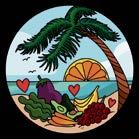







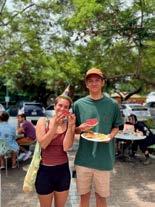

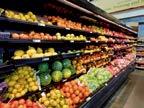

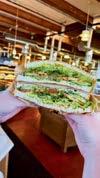







How’s your seafood prep savvy? We gathered great minds to break it down and give you options. You’ll be so proud of yourself!
BY JENN FELMLEY
Buying local seafood in San Diego is one of the most delicious ways to support the community, protect our oceans, and experience the fresh flavors of the coast. But if you're used to grabbing a fillet from the grocery store, navigating a fish market can feel intimidating. Here are my tips to help you shop for local seafood like a pro.
1. Go in with an open mind
Ask for a type of fish, and let them know what you want to make. For a firm white
fish for grilling, they might suggest thresher shark or opah. Or for a delicate, flaky fish for pan searing, good suggestions include sheephead or local halibut.
2. Talk to your fishmonger
Don’t be shy! They know their stuff and can help you choose the best fish for your recipe. They’ll point you in the right direction and may even offer tips on a better way to prepare your purchase.
3. Know what fresh looks (and smells) like
Fresh fish should smell like the ocean! Spot prawns (one of San Diego’s prized seasonal catches) should smell fresh, sweet, and clean. Fish fillets should be shiny, moist, and firm to the touch, with even coloring. Whole fish should have clear eyes (or bulging, if you’re buying local rockfish), tight scales, springy flesh, and bright pink gills.
Heart-Healthy Whole Pacific
Snapper en Papillote
RECIPE BY FERNANDA
LARSON, MS, CN, BASTYR UNIVERSITY CALIFORNIA NUTRITION FACULTY
Pacific red snapper is a local fish widely available during the summer months. The fish’s delicate flavor is highlighted by fresh lemon and herbs. A 3-ounce serving of fish provides an average of 20 grams of lean, complete protein. The use of parchment paper as a baking vessel not only preserves the nutritional value and flavor of the fish but also makes for a sophisticated presentation and easy cleanup.
SERVES 2–4
2 tablespoons fresh parsley
2 tablespoons fresh oregano
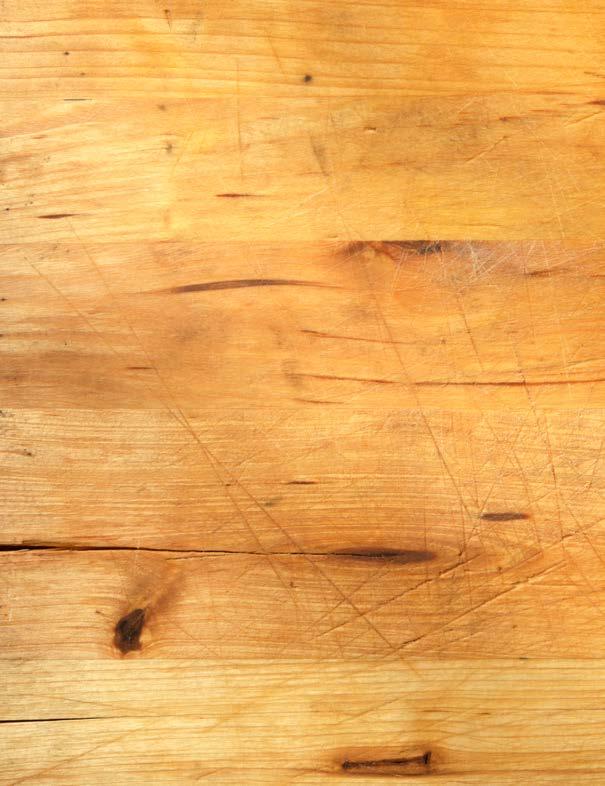
2 tablespoons extra-virgin olive oil
Salt and pepper to taste
1 small Pacific snapper, scaled and gutted
1 lemon, thinly sliced, plus wedges for serving
Parchment paper
Preheat oven to 400°.
Finely chop parsley and oregano and transfer to a bowl with olive oil, salt, and pepper; stir.
Make 3 shallow slits on each side of fish and rub ¾ of the fresh herb mixture all over. Lay lemon slices over each slit and add a few slices along with the remaining herb mixture into the fish's cavity.
Cut parchment paper into a piece large enough to wrap the fish comfortably.
4. Shop directly from local fishermen
For a dockside experience, visit San Diego’s Tuna Harbor Dockside Market, open Saturdays from 8am to 2pm. This market is one of the best places to buy seafood directly from local fishermen and support San Diego’s hardworking commercial fleet. Expect to find sea urchin, local shellfish, whole fish (a less expensive option), and fillets—plus tasty treats from Dockside Fish n’ Chips.
5. Go prepared
Bring a cooler or insulated bag with ice packs to keep your seafood cold until you get home.
Shopping local means eating fresher, smarter, and more sustainably. With a little curiosity—and a go-to fishmonger—it’s easy to bring the bounty of San Diego’s coast to your kitchen.
Make the papillote: Lay the fish on the parchment paper, fold two opposite sides up over the fish, and bring the other two sides together, rolling down toward the fish, making sure it stays in place.
Place papillote on a baking sheet and bake in a preheated oven for 20 to 30 minutes, depending on the size of your fish.
Dress the snapper with more lemon juice and cracked pepper just before serving.
Originally published October 2018

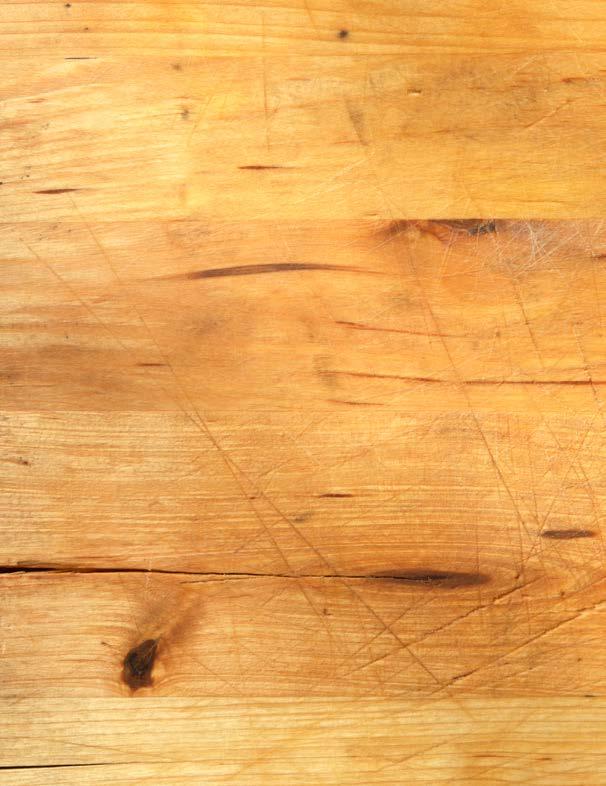
The guy behind the simple genius of Fish 101 in Cardiff and Leucadia knows how to throw together a poke bowl—but this is the version he prepares at home.
SERVES 4
4–6 ounces sashimi-grade bigeye tuna
1–2 tablespoons thinly sliced green and sweet onions
1 teaspoon grated ginger
1 tablespoon soy sauce
½ teaspoon sesame oil
Pinch sesame seeds
Pinch red pepper flakes, or to taste
½ cup cooked rice
Dice tuna with a sharp knife into ¼-inch cubes.
In a medium bowl, mix together onions, ginger, soy sauce, sesame oil, sesame seeds, and red pepper flakes. Adjust to taste. Add tuna and lightly fold until each bite is coated. Best served chilled over a warm scoop of rice.
Originally published July 2021
Three-Step San Diego-Style Campechana
Campechana is a Mexican-style seafood cocktail with a variety of mixed seafood—some cooked, some raw—in a spicy, lime-spiked tomato-based sauce. This recipe comes from Mitch's Seafood in Point Loma, San Diego.
SERVES 4
½ cup ketchup
1 tablespoon horseradish
½ cup Clamato juice
⅓ cup lime juice
½ cup prepared pico de gallo (chopped tomatoes, red onion, cilantro, and jalapeño mixed together, seasoned with salt and a little lime juice, and allowed to stand for 20 minutes for flavors to meld)
Your favorite Mexican hot sauce to taste
1½ pounds mixed seafood, chilled (use cooked crab meat, cooked octopus, raw scallops, cooked shrimp, raw shucked oysters, and any raw or cooked fish)
Tortilla chips and avocado for serving
White Bean and Lemon Pepper Tuna Tartine RECIPE BY HALEY HAZELL
Tartine is just a fancy way of saying "toast," and this lemony tuna and white bean version is so easy it's sure to become a go-to summer lunch. Light, bright, and mayo-free, this is not your grandma’s tuna salad.
Be sure to use local San Diego canned tuna from American Tuna Company.
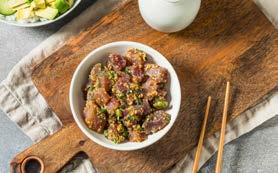
Combine all ingredients (except for seafood, tortilla chips, and avocado) in a bowl and mix well; refrigerate the sauce for at least half an hour so that it is chilled through.
Add all of the mixed seafood and mix gently so as not to break any of the fish apart.
Spoon into four individual pint glasses, top with avocado, and serve with chips.
Chef's note: The Mitch’s Seafood version uses crab, octopus, scallops, shrimp, and oysters. However, you can choose from any of the following or add whatever looks good to you.
Cooked crab meat
Raw scallops
• Shucked raw oysters
• Cooked shrimp
Cooked octopus
Shucked raw clams
Cooked mussels
• Raw or cooked finfish of almost any kind
• Cooked lobster meat
Originally published May 2018

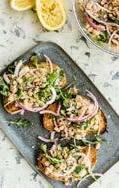
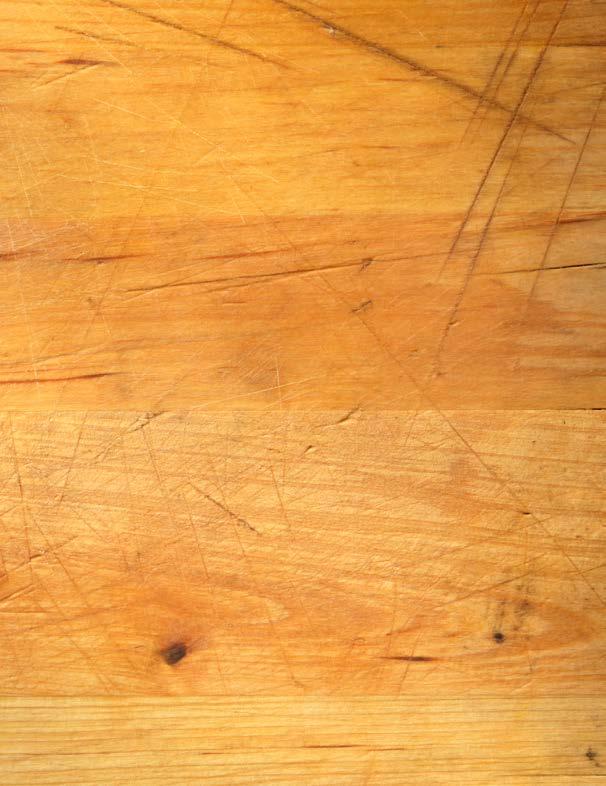
1 can tuna packed in olive oil, drained
1 can white beans, drained and rinsed
½ red onion, thinly sliced
2 cups arugula
1 lemon, zested and juiced
3 tablespoons extra-virgin olive oil
1 teaspoon black pepper
2 teaspoons salt
4 slices bread, toasted
Tepary Beans with Pan-Fried Pacific Mackerel
RECIPE BY JUAN
GONZÁLEZ
Pacific mackerel is a sustainable and nutritious seafood choice—it’s also an underutilized common bycatch of commercial fishermen. Serve alongside summery tepary beans and enjoy this flavorful fish that is high in protein and omega-3s.
SERVES 4
TEPARY BEANS
2 cups dry white tepary beans
2 bay leaves
2 cloves garlic
¼ Spanish onion
1 dried guajillo chile
½ tablespoon salt, or more to taste
2 tablespoons extra-virgin olive oil
1 red bell pepper, diced
PAN-FRIED PACIFIC MACKEREL
4 mackerel fillets, skin on and bones removed
Salt and black pepper to taste
Extra-virgin olive oil or grape-seed oil
8 sprigs pea tendrils or cilantro to garnish
1 lemon, quartered, for serving
Prepare the beans: Place the beans in a large bowl. Add cool water to bowl to cover beans by 6 inches and let soak overnight at room temperature. Drain beans, discard the liquid, and transfer to a large pot with a lid. Add enough cool water to cover the beans along with the bay leaves, garlic cloves, onion, and guajillo chile by about 4 inches. Bring to a boil over high heat, then lower the heat; cover and simmer gently, stirring occasionally, until the beans are tender, 1½ to 2 hours. Remove beans from heat, discard bay leaves and guajillo chile, and add salt to taste. Let beans rest for 20
In a medium mixing bowl, add tuna and flake with a fork. Add white beans, red onion, arugula, lemon zest and juice, olive oil, black pepper, and salt.
Toss together and then spoon the salad over toast. Finish with more freshly cracked black pepper and a sprinkle of flaky salt.
Originally published April 2020

minutes. Reserve 2 cups of the bean cooking liquid, the cooked onion, and garlic cloves, and then drain the beans.
In a blender, add 1 cup of cooked beans with the cooked onion and garlic, and blend with enough bean liquid to make a smooth bean purée; set aside.
In a large, deep skillet, heat the oil over medium heat. Add bell pepper and sauté for 1 minute. Add cooked beans and 1 cup of the reserved bean liquid. Cook, stirring occasionally, until the liquid has reduced to a glaze, about 10 minutes. Season with salt to taste. Divide the bean purée between four plates and top with bell pepper beans.
Make the Pacific mackerel: Season the mackerel fillets with salt and pepper.
Heat a glug of olive or grape-seed oil in a nonstick frying pan over high heat.
Once the pan is smoking hot, add the mackerel fillets, skin-side down. Turn the heat down to medium-high. As the fillets curl up away from the heat, use a rubber spatula to gently apply pressure to the fillet so that the fish is flat and all of the skin comes into contact with the pan to ensure even cooking.
Cook for 2 to 4 minutes, depending on the thickness of the fillet. Once the skin is crisp and golden, turn the fillet over and remove the pan from the heat. Leave the mackerel in the pan to cook through in the residual heat, then serve up immediately over beans. Garnish with pea tendrils or cilantro and lemon wedges.
Originally published June 2023
Yellowtail Sashimi
BY JEN PHILLIPS
This is how pro skateboarder Bucky Lasek makes yellowtail sashimi. SERVES 2

BY ARIANNA LITRENTA
Summer in San Diego is a sacred time when the city comes alive and coastal cuisine shines. Seafood is the undeniable star of the season, and these three new cookbooks will serve as culinary guides to understanding and appreciating all the Pacific Coast has to offer. Each cookbook provides invaluable techniques and unique recipes; more importantly, they share the stories of the people and traditions that have shaped our seafood-driven culture. Whether you're a seasoned chef or a beginner home cook, embrace the flavors of the ocean.
Chef Scott Clark invites readers on a culinary road trip down the Pacific Coast Highway in his visually stunning cookbook, Coastal (Chronicle, 2025). Clark fills his cookbook with equal parts stories, recipes, and ravishing photos that capture and celebrate the true spirit of laid-back Californian
1 Meyer lemon ½ pound sashimi-grade yellowtail
1 serrano chile, thinly sliced
Pinch sea salt
Pinch black Hawaiian sea salt Wasabi and sriracha for serving Tamari or soy sauce for serving (optional)
Tip: Before making the sashimi, soak thinly sliced serrano peppers in pickling juice for 30 minutes.
Cut the Meyer lemon in half. Juice half and reserve; quarter and thinly slice the other half.
With a very sharp knife, slice the yellowtail sashimi-style: Hold the knife at a 45-degree angle and cut the fillet against the grain with one swift motion into ¼-inch-thick slices. Drizzle lemon juice over sashimi slices and top with a quartered slice of lemon. Sprinkle pinches of sea salt and black Hawaiian salt and add a slice of serrano to each piece. Squeeze a small drop of wasabi and sriracha on top of the pickled serrano slice to finish.
Devour as is or serve with tamari or soy sauce for dipping.
Originally published August 2020
cooking. Coastal is more than a cookbook, though: It’s Clark’s love letter to the Central Coast. His passion for California’s gastronomy is rooted in the belief that cooking starts with the people behind the ingredients, a philosophy ingrained in Clark since his fine-dining days. The previous three-Michelin-star chef de cuisine introduces readers to the fishermen, crabbers, farmers, and winemakers behind the beloved California cuisine in Coastal And his recipes seamlessly marry the elegance of his fine-dining background with the down-to-earth vibes of his cabooseturned-sandwich shop, Dad’s Luncheonette. You’ll find straightforward recipes that present regional ingredients in an upscale yet accessible way. The stories, photos, recipes, and writing will make you fall in love with California’s coast all over again.


In his debut cookbook, Taku Kondo combines his passion for fishing, foraging, and the freshest ingredients in a detailed collection of techniques and recipes. The former sushi chef and creator of the Outdoor Chef Life YouTube channel blends his unique background in Coastal Harvest (Penguin Random House, 2025) to showcase the beauty of foraging while highlighting

sustainability. Known for his meticulous approach, Kondo guides readers through knife basics, the step-by-step process of preparing fish, and coastal foraging. Kondo’s cookbook embodies the catchto-plate ethos and presents 85 recipes that honor the simplicity and elegance of Japanese cuisine while highlighting local California flavors.
The community-driven San Diego Seafood: Then and Now is a collaborative effort that celebrates our region’s maritime heritage and the beauty of sustainable seafood. The cookbook features over 100 recipes from local fishermen and chefs, such as Natalie Sawyer of Ironside Fish & Oyster and Davin Waite of Wrench & Rodent. Beyond the recipes, San Diego Seafood narrates the multicultural influences and traditions that led to today's vibrant seafood scene. Together, the stories and recipes intertwine the past and present, highlighting the diversity of regional seafood and culture. The hope for the future is that San Diego Seafood will bring awareness to the importance of sustainable fishing practices by providing readers with an appreciation for responsibly sourced seafood and its impact on our community's health.

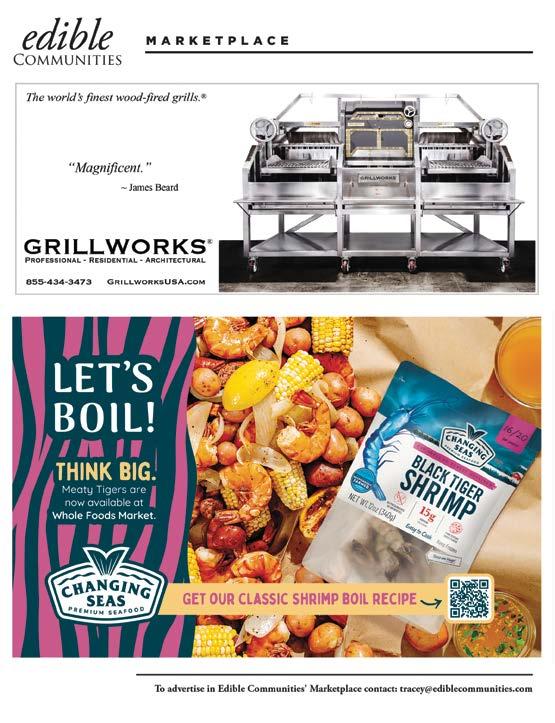

1 “_____ time, and the livin’ is easy”
4 Lunch and dinner, e.g.
7 Expression of gratitude, informally 8 Home to seabass and marlin
Local conditions in which a wine is produced
Wine bottle stopper
___ and don’ts
“Good Eats” medium
13 Cooking instructions 16 Yerba _____ 17 Extremely large 19 Purple fruit 23 Time span 24 ____house: glass building for growing vegetables and flowers
25 Red or yellowish fruit used as a vegetable in cooking 27 Produces produce 29 Establishment where wine is produced 32 Was victorious 33 “Deadliest Catch” setting
Growing area 35 Seaweed
1 Catch of the day, perhaps 2 Is introduced to 3 Extremely long period of time
4 Farmers’ _____ : place to shop for organic produce 5 Garlic-flavored mayonnaise from Mediterranean cuisine 6 Provide food or drink to someone
7 Latin word for earth or land
9 ___ and fro
10 Document summarizing qualifications and work experience, abbr.
12 Large marine fish often used in sandwiches
14 Edible wild mushroom, a.k.a. porcino
15 Decanter
16 Cantaloupe or honeydew
18 Riper
20 Zodiac sign
21 Upper limit, abbr.
22 Relating to the sea and its ecosystem
26 ____view
27 Fruit often eaten dried
28 Observe
29 Chinese cooking pan
30 Abbreviation for extrasensory perception
31 Orange tuber
Carlsbad resident Myles Mellor is one of the top crossword and puzzle writers in the world. He has published over 55 crossword and word search books, producing dozens of puzzles each month.
» mylesmellor.com » themecrosswords.com Answer key on page 40.


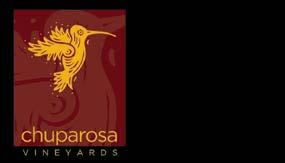
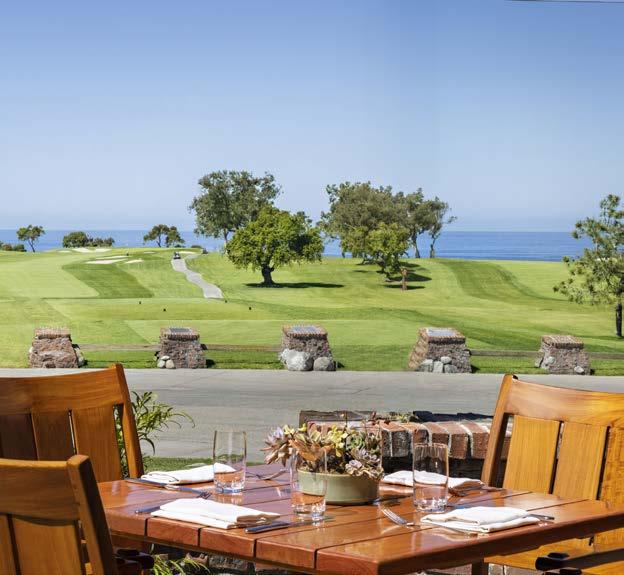
A favorite dining destination for gathering with friends and family, The Grill at Torrey Pines offers delicious dishes from its wood-burning rotisserie, local craft beers, an outdoor patio with fire pits, and incredible Torrey Pines views.
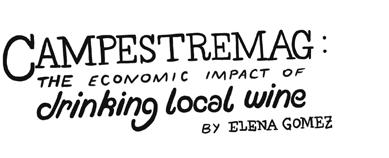
San Diego County is home to 166 active and planned wineries that contributed a whopping $54.5 million in gross sales in 2023, according to the San Diego County Vintners Association (SDCVA)’s latest economic report. In the last seven years, that figure has nearly doubled (up from $30.4 million in 2016) and 50 new wineries have since opened their doors.
In addition to sales, these winemakers also recently added more than 800 jobs to our region in 2023.
Along with revenue, locally produced events like Nat Diego and the San Diego Food + Wine Festival help give the region an economic boost.
Michelle Metter, co-founder and producer of the San Diego Food + Wine Festival, shared that their festival is a recipient of marketing dollars from the San Diego Tourism Marketing District to generate hotel stays for the city. “This past year, when we looked at the ROI (return on investment) reporting that was given to the Tourism Marketing District, we produced 9,911 room nights with the room night revenue [going] back into the city—just over $2.5 million,” Metter said.
These events can be an additional financial boost to the region as tourists spend money at local restaurants and hotels—but these festivals are also an opportunity to showcase the biodiverse wine region of San Diego County.

“We don’t host Nat Diego to make money. We do it to gather and nurture our community. And of course, to party. Not only do we get to meet the producers, but they all get to meet each other,” said Tami Wong of Nat Diego.
The San Diego Tourism Authority found that about 6.5% of tourists who came to San Diego visited a winery or did a wine tasting, according to a 2024 visitor profile. And, while the number may seem low, the Wine Institute and the California Association of Winegrape Growers estimate around $900 million is generated in annual tourism spending, based on their 2022 Economic Impact of California Wine report.

Marc Hashagen says their Blue Door Winery location in Julian sees almost all tourist clientele, while their San Diego location is mostly all local, especially wine club members. As more visitors come in, he’s hoping to market the region as a wine location in the process, one customer at a time.
“A decade ago, when you thought of San Diego wine country, you thought of Temecula,” Hashagen said. “I definitely am all for pushing exposure for winemakers and wineries in San Diego, especially since this is where California winemaking first started. We will do barrel tastings to showcase our wines at events, and every time the focus is on the wine,” he shared.
One of the pain points of many local winemakers is marketing the area as an award-winning, high-quality wine region, not only to tourists but locals too. Instead of sending visitors to neighboring wine regions like Temecula or Valle de Guadalupe, the goal would be to keep revenue and tax dollars in San Diego.
“As we meet on a monthly basis and we discuss the things going on, our thrust is to get San Diegans to drink San Diego wine. If we were able to do that … it would cure a lot of ills,” said Mike Weber, president of the San Diego County Vintners Association (SDCVA).
With a decade of winemaking in Escondido’s backyard, Domaine Artefact Vineyard and Winery’s co-owner, Lynn LaChapelle, is proud to see her winery receiving more awards in the wine world last year. Such recognition ultimately helps spread the word that San Diego is home to high-quality wines.
“We still have customers coming to our winery who have not been made aware that San Diego has a wine-growing region,” said LaChapelle. “That is something that I hope to highlight—that we have a lot of local wineries and wine growers who have put their heart and soul and passion into these projects, and that it’s important to support local producers,” she added.
Some other economic challenges for winemakers, like for every consumer, have been higher prices on just about everything.
For Marc Hashagen of Blue Door Winery, one of the biggest costs has been diesel.
Blue Door Winery produces about 1,700 cases of wine each year using grapes from vineyards in Ramona, Escondido, Fallbrook, and Santa Barbara. But, due to the high cost of diesel, their team decided to stick to using only local

grapes this past harvest.
“A trip to Santa Barbara with a Penske rental [truck] and the diesel was $1,000. That does not include the grapes, hotel, breakfast, and dinner,” said Hashagen. To put that in perspective, a year ago it was $150 cheaper to make that trek north. And, back in 2010, it only cost him $300–400.
Hashagan isn’t alone. More than 60% of winemakers shared with the SDCVA that they have seen higher prices for goods and services in their business since the pandemic in March 2020, especially with the price of glass bottles. Hashagen says he’s cut costs where he can, but ultimately he has had to raise some of his prices to keep up. “We try to be price-conscious so we are not out of people’s budgets.”
Another expensive pain point for winemakers has been insurance coverage. The recent SDCVA economic report found that nearly 60% of winemakers had seen an increase in their insurance rates in the past year, with nearly a quarter of them losing coverage altogether.
“We were canceled by our insurance in 2023. You have to go to the California FAIR Plan, which is the insurer of last resort,” said LaChapelle. Instead of having one insurance policy that covers everything, LaChapelle says she now has five policies, independent of one another, to cover all her insurance needs.
Edward Embly, co-owner of Hungry Hawk Vineyards, says the cost of their insurance in 2024 went up by 50%, and in 2025, it looks like it will be 10–15% more.
With steep costs, and now tariffs on many items like aluminum, these changes are proving the importance of sourcing locally. “We source all our produce and honey, everything we [use to] make our cider and mead, from San Diego County. On top of that, we source our labels and artwork from local label makers and artisans. Of course, nobody is making local bottles and cans—we try to buy them within the state so it minimizes shipping costs and the distance it has to travel,” said Dave Carr, owner, cider maker, and orchardist at Raging Cider & Mead Co.
Carr founded his company on the principle of sourcing everything hyperlocal—long before tariffs were a headline.
“Every money spent at a local business ends up being put back into the local economy. The more money you spend
here, and the more you spend at local wineries and cideries, the more you’re going to help the local economy. And in the end, the money comes back to you as well,” he added.
The bottom line: Each time locals support locals, that support has a domino effect. For winemakers, that means supporting everyone who has a hand in making their wine, from the winery owner all the way down to the farmers growing the wine grapes. The next time you’re reaching for a bottle, consider that your choice doesn’t just affect the flavor of your evening—it shapes the economic future of San Diego County’s growing wine region. >
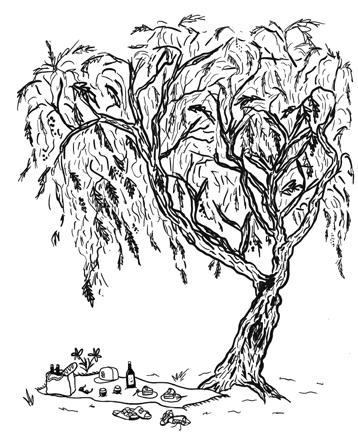




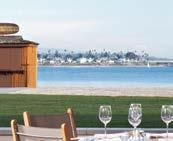
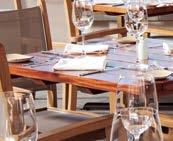










BY LEORAH GAVIDOR • PHOTOGRAPHY BY LUKE SCHMUECKER
Local chefs are dying to get their hands on more fresh, local seaweed,” said Scripps Oceanography researcher Jennifer Smith. “Chef Drew Deckman,” sustainable fisheries advocate and Michelin star recipient, “tells us he’ll buy all of it!” Chefs adore seaweed for its crunchy, salty, umami, and colorful qualities, and it gives dishes that certain seaside flair. Smith’s lab is currently experimenting with seaweed aquaculture in saltwater tanks—on land!
Local, ready-to-buy edible seaweed is not easy to come by, despite San Diego’s coastal location. Commercial offshore aquaculture permits are hard to get, while wild harvesting is highly regulated and “not exactly safe near shore,” said SDSU seaweed researcher Dr. Matt Edwards. “Seaweed is like a sponge for runoff and pollutants in the ocean.”
A $33 million import-export deficit and a multibillion-dollar worldwide industry means there’s a huge opportunity to develop domestic production and markets. Our coastal state is a bit behind when it comes to growing seaweed—Maine, Massachusetts, New Hampshire, Rhode Island, Connecticut, New York, Alaska, and Hawai’i are all ahead.

Dr. Jennifer Smith explains various seaweed specimens at UCSD’s Seaweed Ecology Lab. Above: Bull kelp in a lab collection tank.
Most seaweed we eat (or use in myriad products from toothpaste to soup) is dried and imported from Asia, where it’s a dietary staple and in-water aquaculture is well established.
Seaweed is an excellent source of nutrition, and it grows faster than terrestrial plants. Cultivating it is not as taxing on resources as terrestrial agriculture—no soil, no fresh water, no fertilizer, no pesticides. But most US consumers are not accustomed to eating and cooking with seaweed, so it’s up to chefs, researchers, and entrepreneurs to figure out how to increase the supply of, and demand for, this potential superfood.
Smith’s “jacuzzis,” as she jokingly calls them, are literal incubators for edible fresh seaweed aquaculture in San Diego. Just a few steps from the ocean, hot-tub-sized tanks bubble
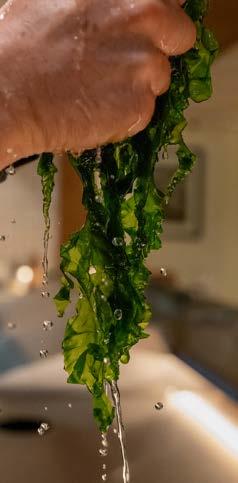
Seaweed isn’t just one thing. It’s a catch-all term for hundreds of macroalgae: aquatic plant-like organisms that intake carbon dioxide and produce oxygen through photosynthesis—like land plants—but lack true leaves, stems, and roots. Algae are commonly divided into brown, red, and green; different types of chlorophyll result in varying colors (which typically change with cooking).
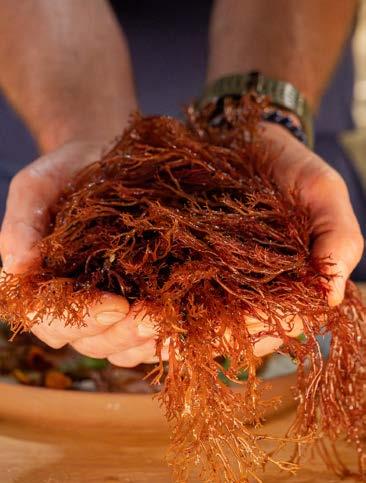
with filtered seawater while ogo, dulse, sea lettuce, and sea grapes tumble with the “current.” A constant stream of air circulates water around the seaweed to mimic a nearshore habitat.
“Land-based seaweed farms—a.k.a. tumble culture—are the most effective way to expand this industry in our region,” said Edwards.
Meanwhile, in-ocean seaweed aquaculture in California waters is bogged down by the requirement for an Environmental Impact Report “that can cost up to $200,000—and isn’t guaranteed to pass muster,” said Edwards. To make it more complex, the current California Department of Fish and Wildlife permitting process for commercial in-water seaweed farms is tangled up with finfish and shellfish. “And,” he added, “huge offshore seaweed farms like those in Asia would never happen off La Jolla or any of our coastal towns. It would change the character of the coast.”
In contrast, barriers to land-based seaweed aquaculture are few: “All you need are tanks, sunlight, and seawater,” said Smith. “And seaweed babies to get started.” But seaweed hatcheries and seed banks don’t readily exist on the southern US Pacific coast. As of 2024, California has only four active seaweed aquaculture farms:
two commercial operations and two pilot programs. Three of them provide seed stock—two for food, and one for research.
That’s where Edwards comes in. With grants from the National Oceanic and Atmospheric Administration (NOAA), Edwards is part of a team developing nonproprietary modular hatchery technology and brood stock to make start-up more affordable. The hatchery device is a two-foot-tall portable cylinder with an inner light, and “will work with most any type of seaweed,” said Edwards. Just add spore solution and seawater, switch on the light, and sporophytes develop cozily inside the cylinder. Then they can be transferred to land-based tanks or attached to inwater lines.
“There’s a huge amount of opportunity here in San Diego and Southern California,” said Edwards. “We already have a great infrastructure in our state for processing, packaging, and distributing produce. It wouldn’t be hard to add seaweed.” San Diego’s nutrient-rich water, maritime industry, proximity to markets, and local interest in nature-based solutions are all assets that can help seaweed hold fast (pun intended!) as a successful product. Relatively minor hurdles include permits for seawater
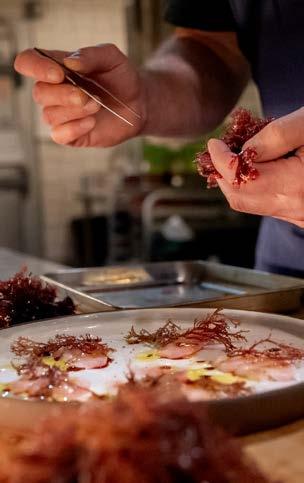
discharge on land, FDA preventive controls for operations over $1 million, and packaging that preserves freshness and is environmentally friendly.
Monterey Bay Seaweeds, one of California’s commercial seaweed operations and a partner in developing the hatchery device, grows a variety of species in tanks and ships fresh to restaurants throughout the state, a model Edwards hopes to emulate in San Diego. Monterey Bay Seaweeds are on the menu at Valle and Wrench & Rodent in Oceanside.
“Sea lettuce could be profitable, and ingredients like red algae appeal to higher-end restaurants. And it’s been said that dulse—a ‘meaty’ red seaweed—tastes like bacon,” Edwards chuckled.
“I like to use seaweed seasoning instead of salt,” said Smith. “It’s higher in nutrients,” like B12 (not found in land plants), iodine, and fatty acids. Dulse and sea lettuce are good sources of fiber and protein. Red ogo, a deeply hued, bushy variety of Gracilaria (harvested to make agar used to thicken foods like soup and ice

cream), “has a nice crunch and salty flair when it’s fresh,” Smith said. It just might be her favorite.
Some San Diego chefs are exploring how to make US-farmed seaweed “the star of the show,” rather than a garnish. Chef Claire Bastarche of Fox Point Farms and Berry Good Food’s chef Christina Ng partnered with California Sea Grant to develop recipes using bigger bunches of seaweed. There’s puttanesca and whipped cream cheese featuring winged kelp; brightly colored ginger-garlic pickled ogo and a bloody Mary using the pickle juice; and chili crisp made with dulse—to name a few. Chef Ng even figured out how to work sugar kelp into a savory cheddar loaf. Find these recipes and an ocean of information about the US seaweed industry at Sea Grant’s Seaweed Hub.
In the 35 years he’s studied seaweed, Edwards said funding has grown exponentially in the last 10–15. In addition to studying seaweed for food, many federally funded projects focus on bioremediation. That spongelike quality could make seaweed an effective filter for polluted waterways—already in progress in
Dulse is often called the “bacon of the sea” for its smoky, umami flavor.
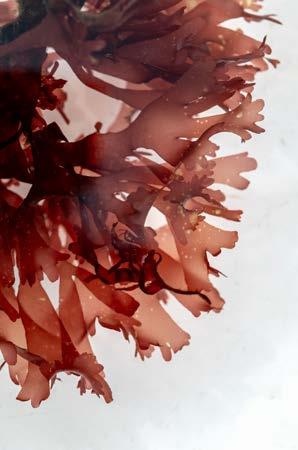
Maine and currently part of an experiment supported by the Port of San Diego’s Blue Economy incubator. Sunken Seaweed, now in Humboldt, started growing sea lettuce at Grape Street Pier in 2017 to explore its potential for removing pollutants. Ola Farms is continuing the investigations in preparation for a local culinary seaweed industry.
To expand aquaculture in San Diego by easing obstacles to industry entry, the Port of San Diego drafted a Shellfish and Seaweed Aquaculture Program in 2024. Possible farm sites include three in-water farms—Imperial Beach, National City Marine Terminal, and Zuñiga Shoals—along with three landbased operations: the former Kelco infrastructure (used for wild kelp harvest from the 1930s to early 2000s) southeast of Coronado Bridge, a gravel lot adjacent to Tenth Avenue Marine Terminal, and a warehouse east of National City Marine Terminal.
Elsewhere in California, shellfish farmers are studying the potential for seaweed as a profitable byproduct for human consumption, instead of viewing it as a nuisance. As a bonus, seaweed-shellfish tandem aquaculture could improve water quality for the bivalves as they grow.
“As San Diego and California consumers create demand for local seaweed, we’ll see the infrastructure start to build out,” said Edwards. Smith and Edwards agree that it won’t be long before we see San Diego-grown seaweed at markets and on menus in this seaside town. D


Vineyards & Winery

Family owned & operated since 2009, Hungry Hawk Vineyards is a boutique wine haven where elegance fills every glass. Discover meticulously crafted wines, born from passion and precision, and enjoy our shaded patio boasting panoramic vineyard views. Indulge in a refined tasting experience with our attentive, knowledgeable staff in our all-adult and pet-free environment.



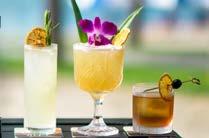

Presenting a tantalizing new menu by Executive Chef Alejandro Sicairos.


BY BETH DEMMON
PHOTOGRAPHY BY LAUREN DI MATTEO
Today, San Diego’s dining scene feels unrecognizable from five, 10, and certainly 30 years ago. Flashy spaces designed for Instagram and influencers feel commonplace, if not inescapable, to anyone eating out. But when The Fishery opened in 1997, that sentence wouldn’t have even made sense to founders Judd and Maryanne Brown.
Back in the ‘90s, Judd’s career as a commercial fisherman led him to launch a wholesale business, Pacific Shellfish. Pacific Shellfish now sells to around 500 different restaurants, markets, and hotels, by their daughter Annemarie’s best estimate. But back then, they got their start showcasing their fish in their own restaurant, which converted an empty wreck of a warehouse at the corner of Cass and Opal Streets into a staple of San Diego seafood.
As Annemarie recalls it, it was Maryanne who brought The Fishery to life. “The Fishery was my mom’s passion,” she says. “She really poured her heart and soul into the place.” It began as—and remains to this day—a restaurant-slash-fish market, with tables for dining and a display case stuffed with fresh catches, like swordfish, the fish that got Judd his start.
Over the decades, The Fishery has earned Michelin nods and plenty of mentions on local best-of lists. Its icon status didn’t happen overnight, though, and not without change. Annemarie laughs and says she wasn’t even considering running the family business—she had other plans. “I was dead set on law school,” she says. But like for so many people, the pandemic pushed her in a different direction. Now, she co-owns The Fishery with her husband, Nick Lorenz, and recently brought on chef Mike Reidy as chef-partner.
Reidy worked as the executive chef at The Fishery from 2020 to 2023, before departing for a yearlong stint at Callie in East Village. Annemarie marks his return as a turning point in the restaurant, one that illuminates a bright future. “We all want the same thing, and we want to keep growing without burning out,” she explains.
As a family business, there’s plenty of family involved—but the two have to be balanced with one another, she says. “I have always believed in a healthy work-life balance, and quality of life really
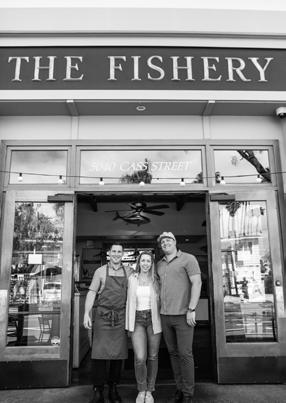
matters,” Annemarie explains. Burnout is too common among hospitality workers, especially post-Covid. “So when [Reidy] came back to us, our conversation was basically like, ‘How can we be the best we can be and be happy doing it, and give our community a place that they can consistently go to year after year?’” Streamlining operations into a sustainable workflow is something Annemarie says remains a work in progress and a dream that requires constant tweaking and attention.
But The Fishery’s goal of sustainability extends beyond operations. “This might be controversial, but I hate to use the word ‘sustainable’ because I don’t think anything’s truly sustainable, not when we’re involved,” she laughs half-jokingly, referring to the effect of human beings on the planet and in the seas. “But we do our best to be mindful and respectful to the planet.”
Part of those mindful practices include prioritizing small suppliers with whom they have personal relationships, only serving wildcaught fish, and sourcing locally as often as possible. Of course, unpredictability of supply due to factors like migration or algal blooms means they often have to pivot. That’s why The Fishery prints restaurant menus every week rather than every season. Annemarie says, despite seafood’s fluctuation, they wouldn’t have it any other way. “We’ll never have any other protein.”
Still, she says, for as much as she, Lorenz, and Reidy pay homage to her parents’ original vision, with new owners come new ideas—for the better, she hopes. “We want to keep adapting and growing,” she explains, while assuring me that the heart and
soul of The Fishery will always remain the same. Some proposed changes include launching a wine club and building an elevated cocktail program from scratch. “We had been applying for a liquor license for almost, like, 18 years,” she says with a laugh. “Being in Pacific Beach, it was nearly impossible. Somehow, we got it through the lottery in 2020.”
Since then, Eddie Avila III has headed the burgeoning beverage program, which works with the kitchen to reduce waste. Annemarie says travels to London informed much of the cocktail menu’s growth, along with tweaks in the kitchen that she says remain true to the essence of The Fishery and its history. For example, fish and chips are a no-brainer mainstay on most seafood restaurant menus—including theirs. But after sending Reidy to London a few times for inspiration, he returned with an idea for a lighter, crispier batter that appeals to a wide variety of guests. That variety is something Annemarie says didn’t exist a few years ago. She’s seen the area develop from a weekend party destination for college students into a bona fide culinary sensation, thanks to nearby places like Wayfarer Bread and Paradisaea. “It’s been pretty amazing to watch and to be a part of that,” she says. Still, some things will never change—like keeping the fish market in the restaurant. “There was a moment we were waffling with removing it and just extending the bar,” she says. “But it almost broke my dad’s heart.”
The seafood case and all its history remain. D
The Fishery is open from 11am to 10 pm Wednesdays through Sundays at 5040 Cass Street in Pacific Beach. Find out more at thefishery.com or on Instagram at @sdthefishery.
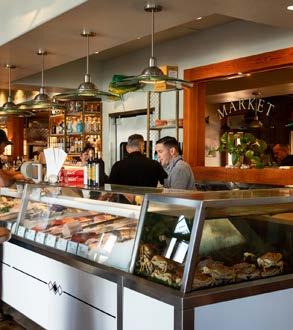


























































































Ingredients:




• 3 tablespoons neutral cooking oil, like sunflower or avocado
• ¼ cup heirloom popping corn kernels
• 2 tablespoons maple syrup
• ½ teaspoon salt
• ¼ cup toasted salted pumpkin seeds
• ¼ cup roasted salted peanuts (optional)







Sweet and salty with just the right crunch, this is the best snack for watching a ball game. Leave out the peanuts if you’re serving anyone with allergies, or replace them with another nut or seed of your choice.
1. Heat the oil in an 8-inch lidded saucepan and add 1–2 kernels of corn. Wait until they sizzle and pop, then add the remaining popcorn and quickly drizzle the maple syrup over, sprinkle with the salt and cover with the lid.




2. Cook, while shaking the pot back and forth over the heat until all the kernels have popped, then remove from the stove and pour immediately into a big serving bowl.
3. While the maple syrup is still hot and sticky, add the pumpkin seeds and peanuts and toss to combine.
4. Let cool before serving.














Babe Ruth (1895 – 1948)


Robinson (1919 – 1972)


(1934 – 1972)


Toni Stone (1921 – 1996) 1920s
Masanori Murakami (1944)
Jim Abbott (1967)
This timeline shows some of the important milestones in the history of baseball. What do you notice about the people and settings? Do they change or stay the same over time?


Babe Ruth becomes famous for his record-breaking home runs


The first baseball game aired on radio night game



Jackie Robinson becomes the first Black player in Major League Baseball
The first baseball game aired on TV


Toni Stone becomes the first woman in the Negro Leagues, followed by Connie Morgan and Mamie Johnson 1993
Jim Abbott, who was born without a right hand, throws a no-hit game (no one from the opposite team hit the ball!)










Pain
“As






“Regular
“Regular
healnonetheless.massagetherapy.com
CMT #172357

BY KENISE ADAMS

As the summer temperatures rise, it’s time to turn your attention to seeds that will thrive in the extended heat of San Diego’s fall season. Whether you’re an experienced gardener or just getting started, there are plenty of plants that will add flavor, color, and texture to your garden as summer plantings. According to Brijette Peña of the San Diego Seed Company, “Summer gardening is all about choosing crops that can withstand the heat and produce flavorful yields.”
With our temperate climate, there’s a wide array of crops to start in what some gardeners consider an offseason for new starts. With expert guidance from Peña, you can cultivate a garden that offers fresh produce through summer into fall. Remember to mulch, water deeply, and enjoy the beauty and bounty of your summer garden. If you’re eager to delve deeper into seasonal planting and seek seeds tailored for our 9–10 zones as well as growing tips, visit Peña’s website at sandiegoseedcompany.com to find a comprehensive growing calendar and a plethora of resources to support your gardening journey.
Let’s explore garden staples like marjoram, peppers, and tomatoes— each offer unique qualities that will help your garden flourish during the hottest months of the year.
With its sweet, oregano-like flavor, marjoram is a perfect addition to your herb garden. It grows well in zones 9–10, offering fresh foliage throughout the summer.
Getting started
• Sprinkle seeds on moist soil and press them gently into the surface.
Transplant seedlings once they’re 4–5 inches tall, spacing them 12 inches apart.
Keep plants weed-free and water regularly to encourage strong growth.

Marjoram loves full sun and well-drained soil. It’s great in containers, making it easy to move during extreme heat. Harvest leaves just before flowering for the best flavor, and prune plants periodically for a continuous harvest.
Peppers, offering a wide range of flavors from sweet to fiery hot, are a must-have in any garden. Peppers grow well in full sun and are ideal for zones 9–10.
Getting started
• Start seeds in spring or in the early part of the summer season.
Use starter pots for germination, then transplant when seedlings are 4–5 inches tall.
Space plants 18 inches apart to ensure they have enough room to grow.
In extreme heat, use shade cloth to prevent sunscald.
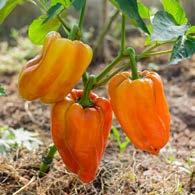
Pepper plants produce an abundance of fruits. Whether you’re growing bell peppers, jalapeños, or habaneros, regular harvesting encourages more fruit production.
Tomatoes are the most popular staple among home gardeners, and for good reason: With over 10,000 varieties to choose from, tomatoes are versatile and offer endless culinary possibilities. “In zones 9–10, tomatoes can be grown year-round, but they thrive in the warmth of the summer months,” noted Peña.
Getting started
• Plant determinate varieties in small spaces and indeterminate varieties with trellises for support.
• Space plants 18 inches apart for optimal airflow.

Keep the soil moist and mulch to retain moisture. Tomatoes are best harvested when ripe, and picking them regularly ensures a steady supply throughout the growing season. Eat them in fresh salads, salsas, and homemade sauces.
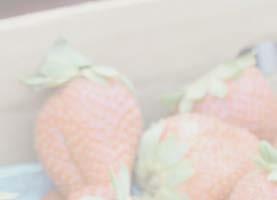











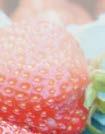



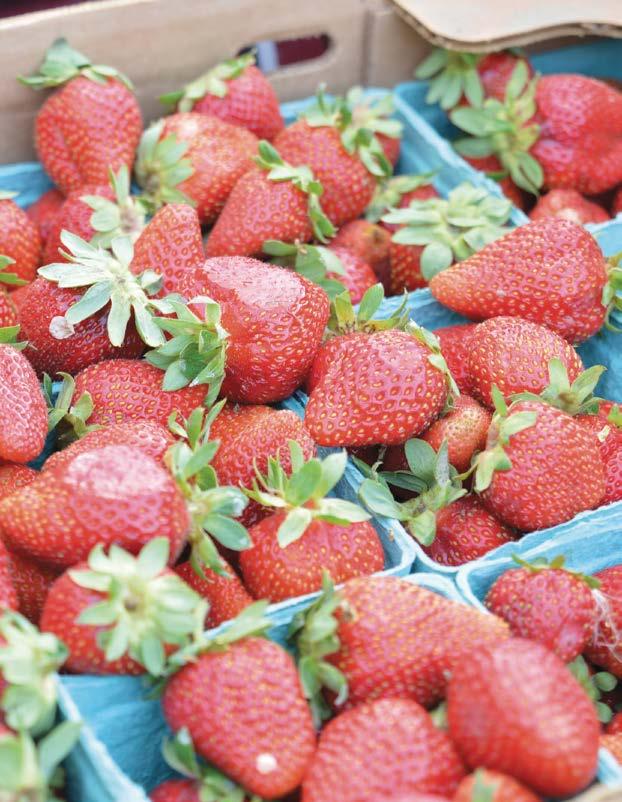
BY DR. SABRINA A. FALQUIER PHOTOGRAPHY BY JEN LO
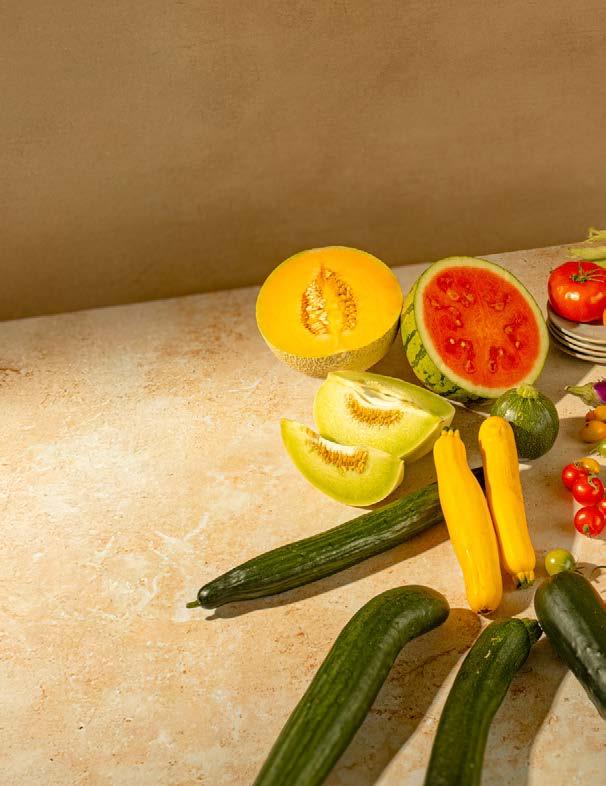
The Cucurbitaceae family (or summer gourds) consists of vining plants with varying growth times—think cucumbers, summer squash, watermelon, and cantaloupe. While cucumbers grow quickly, melons take longer. This plant group is hydrating and packed with vitamin C and potassium, as well as beta-carotene in orange-fleshed melons. Enjoy cucumbers fresh, pickled, or in chilled soups. Cantaloupe is also delicious and refreshing as a simple chilled soup. Summer squash is great grilled or sautéed. Watermelon and cantaloupe are perfect to wedge and enjoy on the hottest days of the year. They also pair incredibly well with salty cheese and herbs, creating an unexpected and delectable contrast in flavors.
Nightshades—including eggplants, peppers, chiles, tomatoes, tomatillos, and potatoes—are summer staples. Most are technically fruits due to their seeds, and it’s exceptionally rare for people to have a nightshade allergy. They’re rich in vitamin C, potassium, fiber, and antioxidants like lycopene (from tomatoes) and capsaicin (from chiles). Enjoy them raw in salads and salsas, roasted, grilled, or cooked in dishes like baba ganoush and ratatouille. Potatoes simply boiled and served with olive oil or butter and sprinkled with fresh herbs make for a perfect summer dish.
Welcome to the summer edition of the Superfood Series! The warm weather invites a slower pace, lingering evenings, and simple yet delicious meals.
In summer, our bodies often crave lighter meals. Nature’s bounty flourishes, making it the perfect season for dishes requiring minimal cooking. This is also prime grilling season, and I live by the motto “grill on, veg on.” Grilled vegetables and stone fruit bring out incredible flavors while keeping the kitchen cool and cleanup easy.
A common question is: What’s the best way to eat certain foods? It depends! Take tomatoes, for example. Eating them raw preserves vitamin C, which is heatsensitive. However, cooking breaks down cell walls, making lycopene—a powerful antioxidant—more bioavailable. Bioavailability refers to how easily the body absorbs and uses nutrients.
The best approach? Embrace variety and enjoy summer’s bounty in all its delicious forms—raw, grilled, or cooked—to experience the full range of flavors, textures, and nutrients.
Until next season—salud and bon appétit! D
Disclaimer: This article is for informational purposes only and should not replace recommendations from your medical team.
Corn, packed with fiber, B vitamins, and lutein, is a whole grain and has been a staple in Latin American cuisine for centuries. When using dried corn, the process of nixtamalization (soaking in lime water) enhances the bioavailability of niacin (B3) and minerals, and forms the base for tortillas, tamales, sopes, pupusas, and a vast number of other masa-based dishes and beverages. Yet, for many, the simplest joy in summer is enjoying corn on the cob steamed or grilled with butter, or Mexican-style with crema and sprinkled with Tajín and cotija cheese.
Stone fruits with pits, like peaches, nectarines, plums, apricots, and cherries, are rich in vitamin C, fiber, and antioxidants like beta-carotene. They are best when eaten out of hand, over a sink to catch drips of juice. Or try grilling them to enhance their natural sweetness, then relish them alone or with ice cream or honey. They are also sublime in fruit-forward desserts, like tarts, pies, and cakes with minimal ingredients.
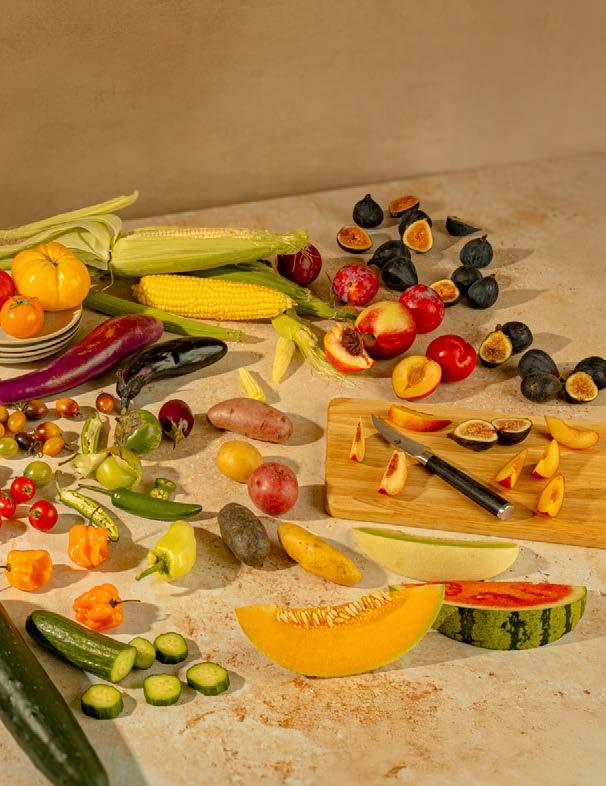
Figs grow heartily in the San Diego region and offer a naturally sweet, jammy flavor with fiber, calcium, potassium, and antioxidants. Enjoy them fresh or grilled to bring out a caramelized richness. They pair beautifully with cheese, nuts, and honey on a charcuterie board. Figs also stand out in salads, baked goods, and jams, adding depth to both sweet and savory dishes.




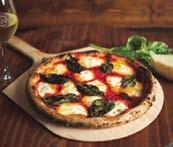











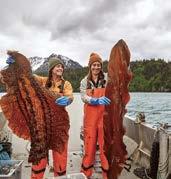
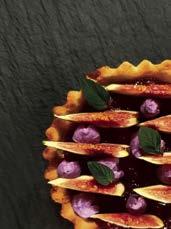
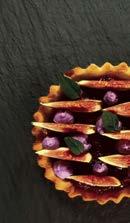
















SHARE

GROW
3541 Via Montebello, #192-313
Carlsbad, CA 92009
